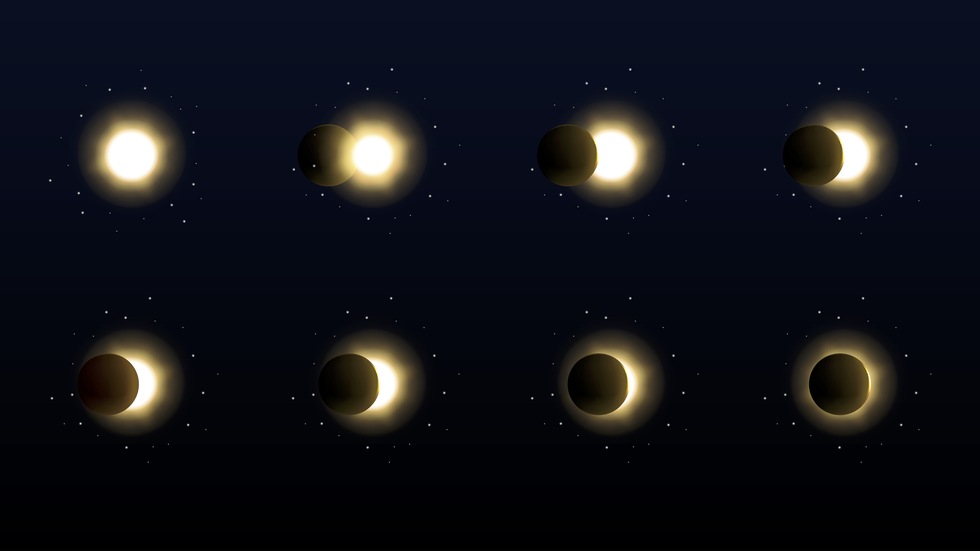They don't come along very often. Have you seen one?
No, we're not talking about Star Wars sequels that will stand the test of time. We mean a total solar eclipse—one trip to the Dark Side that's worth planning for.
There will only be six total solar eclipses on Earth between now and the end of the decade, but only one of the eclipses will be visible over the continental United States. That event comes in the early afternoon of April 8, 2024.
Yes, there will be an annular solar eclipse that swoops southeast from Oregon to Texas in October 2023, but annular eclipses—during which a ring of the sun is visible around the edges of the moon as it passes in front—only partially block the sun. The moon is too far away to block out everything.
But a total solar eclipse is the real deal, a heavenly ballyhoo, a celestial event without a qualifying asterisk, in which the sun is completely obscured by the moon in a sky-darkening, end-of-times sky extravaganza that terrorized early hominids into praying to their deities for rescue.
The total solar eclipse of April 8, 2024, will appear over Mazatlan, Mexico, just after noon local time. From there, provided clouds are scarce, stargazers will observe about 4 and a half minutes of lunar photobombing. Even if the weather is rainy that day, ambient light will be choked off and things will be feeling cataclysmic.
The path of the eclipse will continue northeast, putting Dallas; Indianapolis; Cleveland; Buffalo; Burlington, Vermont; and the noncoastal areas of central Maine squarely in the shadow zone.
By the time the track leaves the United States, the duration of the obscurity will have dwindled to between 2 and 3 and a half minutes, depending on how close to the center of the path you are, so if you want to find the most enduring darkness in the USA, head to Texas.
In Canada, the track will barely nick Montréal before traveling mostly over smaller villages in New Brunswick and Newfoundland.
The website Great American Eclipse, which has never heard about a sun-blocking it didn't love, calculates that 31.6 million people already live under the path of the total solar eclipse, although the places it'll pass over are ripe for well-timed exploration by incoming vacationers, too.
The site has put together the handy map below showing the eclipse's track. Stargazers will be pleased to know the map is available to buy as a poster. Great American Eclipse also has a bunch of detailed mini maps of smaller areas that will help travelers drill down on locations so they can better plan where to stay for the event.

Just make sure to pack the appropriate protective eyewear. As if you needed to be told, staring directly at the sun during an eclipse of any kind is something that experts warn is a foolish thing to do.






